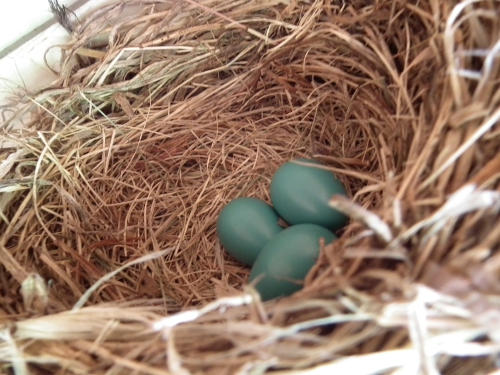
Some time ago (April 16) we returned to the field of the Full Moon/Grief walk. Our group was smaller this time. We had timed our congregation to dusk, because that is when the male woodcock performs its sky dance for the benefit of the females of the species. Woodcocks are crepuscular, most active around dusk and dawn. Every year around April,  a flock takes up residence in this particular hay field in the Greenways Conservation Area in Wayland, to woo, mate and nest. Every evening for a month or so, one, two or three males perform a dance in the sky above the wide-open field for who knows how many females watching from the bushes on the field’s edge.
It’s too dark to spot him (let alone the silent females), so you mostly catch the woodcock by ear. When on the ground, he makes a distinctive peent-ing sound. I think it means: Are you watching me? Here I go! Then you know he’s taken flight when you hear the whistling, twittering sound from his voice and the airflow through his feathers. If you’re lucky to spot him against twilit (or street lit) clouds, you’re taken aback by how diminutive he is, and his lack of grace. He is all wings, a small ball of feathers flung up into the sky in a messy, wind-driven spiral. What falling up would look like.  Your eye invariably loses him against the dark horizon, the dark earth. Still, you know he landed, and more or less where, when he betrays himself with his peent.
But as I describe it – and even as Aldo Leopold describes it, much better than I can, in The Sand County Almanac – it just sounds way too… big. I’m afraid that I’ve raised your expectations, that when you go looking for the woodcock you’ll be disappointed. He is really only the size of a robin, a small, ruffled silhouette barely distinguishable  against the pewter grey sky. The peent is subtle at a hundreds yards’ distance. The pretty twitter is even more subdued and you have to turn your head to aim an ear at it. The wind will try to rob you of your already fragile experience of him.
But we were there to witness the woodcock and we were determined. There we stood, seven humans, in the middle of the grey, breezy field, hummocks of hay, timothy and weeds still small, but tenacious, underfoot.  “Where is he?” someone whispered. “Wait. Listen.” Peent! Snickering. “That sounds kind of rude!” Then, “He’s up! Hear it? Sounds like…” and “I see it! It’s there!” I looked from the sky down to the group: six dark statues, all with heads raised, some pointing. The question presented itself: what are we doing? What’s with the words, the pointing  (like that helps anyone)?  The answer struck me hard: you have to care.
There were some among us who didn’t care. Their words, their body language were of puzzlement bordering on disappointment. Was that it? Was it these woodcocks? (There were three hard at work in the field that day.) Or are all specimens of their species this… fragile? Or was it the place, the car noise and orange street light? Or the weather, the thieving wind? No, it was that they couldn’t bring themselves to care.
I realized that I was having to work hard at it myself. These birds, their dance, they live on the edge of our common senses.  I was pushing my caring to act like an extra sense to allow me to experience these birds. I wasn’t just paying attention, though that too was necessary. Not content with just hearing two faint sounds and seeing a ghost of a shape, I was also investing myself, digging deep, giving much, caring, so as to drag every bit of marvel and awe out of the experience.
What I found was, again, grief, quite specific this time. This field, where the woodcock has been coming, decade after decade, gets mowed around the time the females lay their eggs on the ground on the edge. The noisy, colorful combine will come for these dull-colored, quiet birds. This field is also being considered for sports field. The flash and shout and strife of bats and balls and orange-clad running bodies, the flood lights at dusk, the fuming parking lots, the weekly mowing, the trash… the woodcocks will not compete.
There are two extinctions here. The birds’. Ours, at least the extinction of a part of us.  The suburban noise of the leaf blower, the honking cars, blaring sirens, the slick feel of our plastics and shock of “butt-kicker” movies, the flash of street and traffic lights, computer screens, the clothes we wear have robbed us of our experience of these dull, small animals, who are nevertheless  more alive than cars, leaf blowers, movie action, computer models, gaudy fabrics, plastics…
But they will not show themselves. It is up to us to care about them. So unless we can get more people, more than just seven, to come and stand in that field and to care that much, the Greenways’ woodcock’s passing will not even be noticed, and we will have lost yet another opportunity to connect, the practice connection, to care.